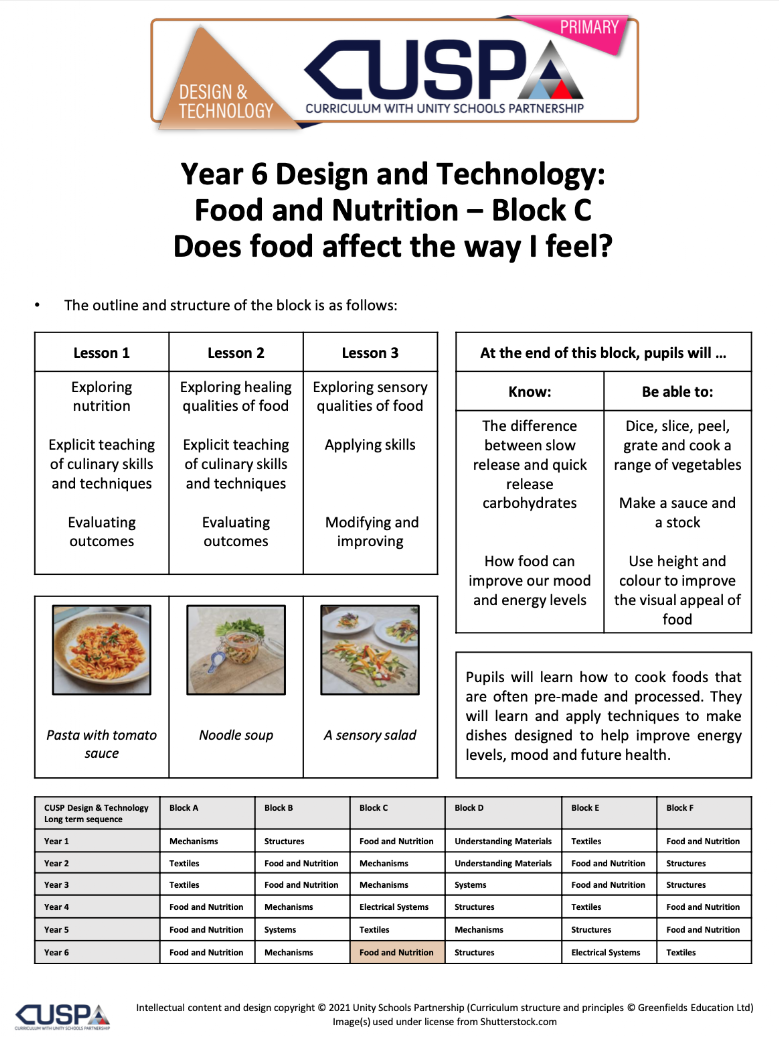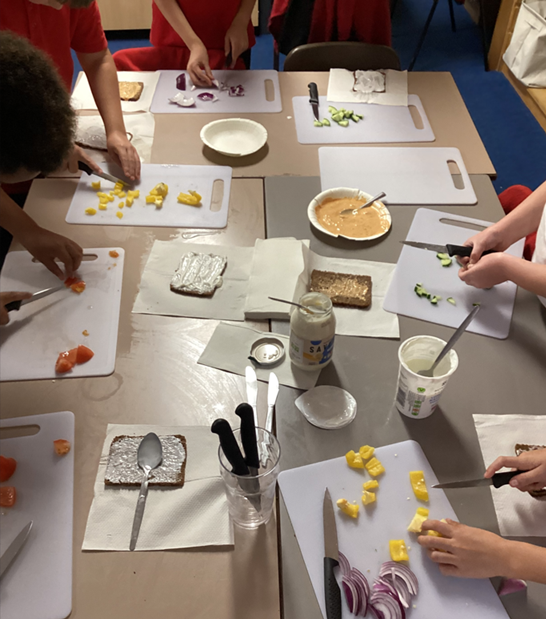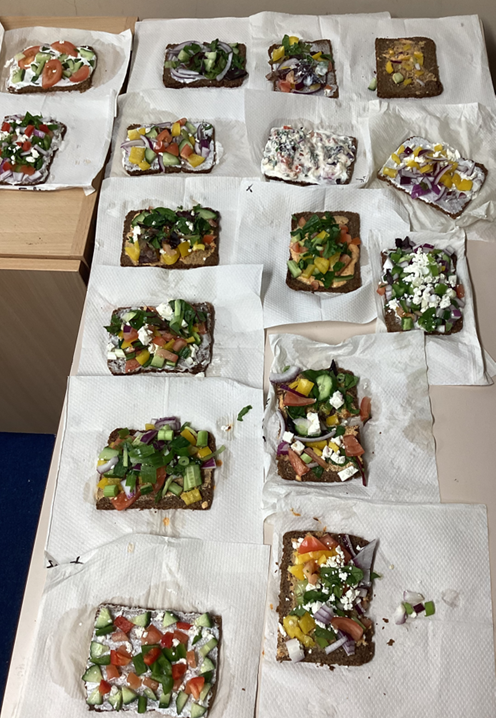DESIGN and TECHNOLOGY
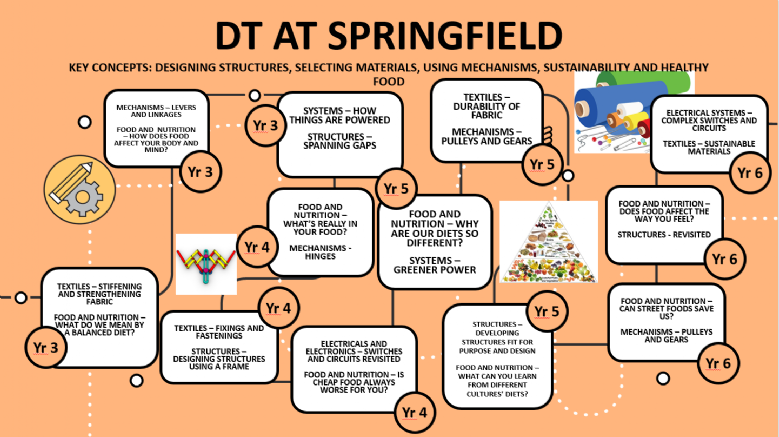
The Design and Technology curriculum at Springfield follows the carefully planned and structured CUSP modular programme which is based on evidence-led practice. Divided into blocks of learning, the pupils of Springfield are carefully guided to think, work and communicate like a designer. The intention is that children are inspired through teacher instruction to gain the knowledge to work like a designer and then skilfully apply their own understanding.
The organisation of the DT blocks throughout the academic year and then across the school years from 3 to 6 allows the children to cover and then re-visit a range of disciplines, including food and nutrition, mechanisms, structures, systems, electrical systems, understanding materials and textiles. Each block incorporates four main aspects in order to promote and develop the skills of ‘working as a designer’ including design, make, evaluate and apply. In addition, the modules incorporate activities designed to develop pupils’ oracy and vocabulary skills. The intention is to enable pupils to use ambitious language associated with design and technology both in context and with understanding when talking about their learning.
Key concepts: Designing structures, selecting materials, using mechanisms, sustainability and healthy food
Long-Term Sequence
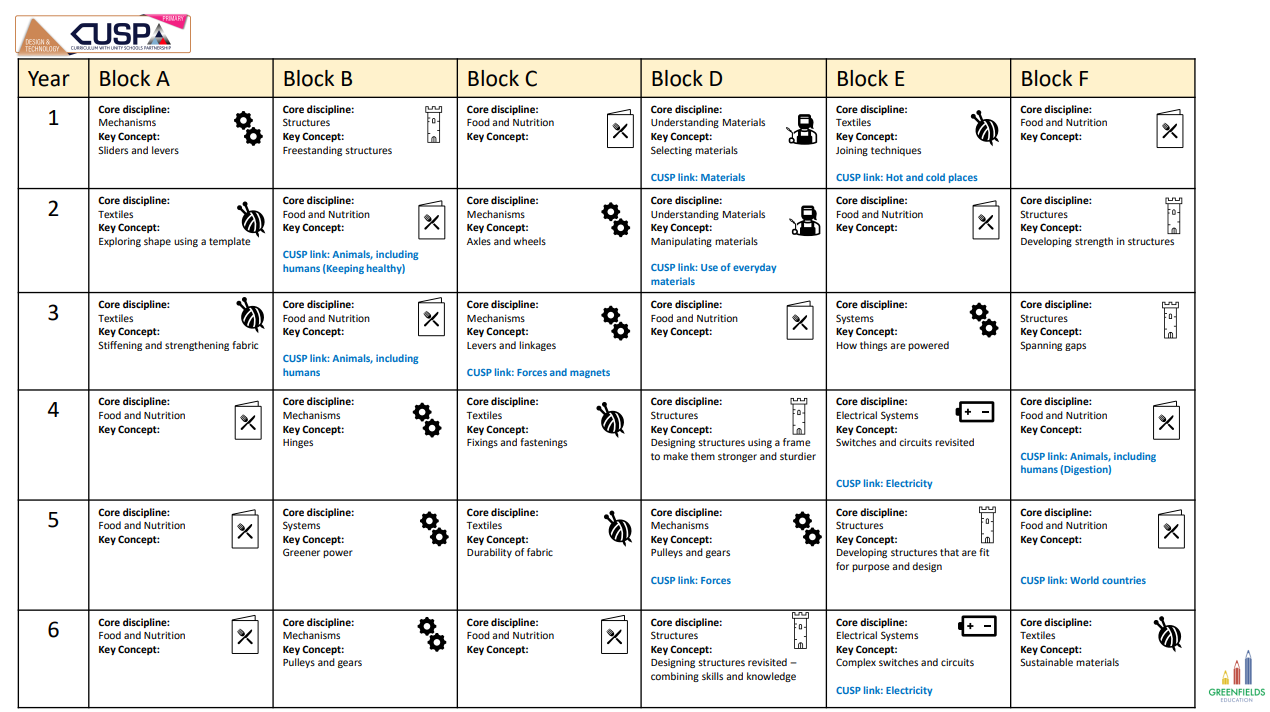 Example of Progression Overview
Example of Progression Overview
